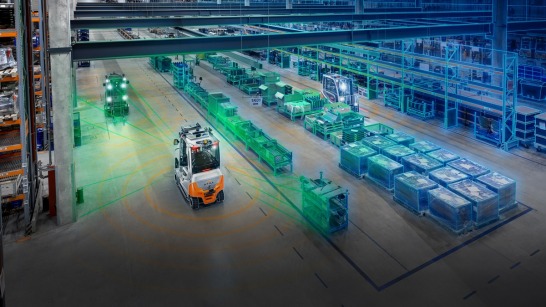Live Streaming for Business Customers: New Opportunity for the Forklift Segment in China
But what exactly are the advantages of these live streaming events, compared to conventional print and video commercials? “They make our brand and our products more approachable and more tangible. Live events also provide an opportunity to build trust with the customer,” says Yao Weida, E-Commerce Manager at Linde MH China. He came to the intralogistics company at the end of 2019, with the mission to use his decades of e-commerce experience to expand the industrial truck business, strengthen customer interaction, and offer customers a better service experience.
Although live streaming was an important trend in the corporate customer division long before the coronavirus pandemic, Yao believes the pandemic has been a key factor in driving the development forward: “As we have so few opportunities to communicate face-to-face with our customers, online platforms have become our main means of communication and our main sales channel. By strengthening our presence on online platforms like WeChat and Douyin (TikTok), and opening up e-commerce channels such as Linde Mall and JD Mall, we have begun to explore the opportunities that live e-commerce presents for us,” Yao explains.
Linde MH China’s warehouse logistics entry-level products, such as electric pallet trucks, offered the perfect point of entry into the world of live streaming, because they are easy to demonstrate and fall under a different price bracket to counterbalanced forklifts. During the Singles’ Day Online Shopping Festival 2020, almost 100 units were ordered in one and a half hours through direct sales. “If we weren’t convinced before of how much potential live streaming has for our industry, we certainly are now,” says Yao.
The Perfect Combination of Online Live Streaming and Offline Service Provision
So, if entry-level products can be attractively presented and clearly demonstrated using live streaming, would this format also work for complex supply chain solutions and premium high-tech products? Yao believes we need a change in perspective in this regard: “We have to understand our customers’ problems and requirements in order to be able to offer them the right solutions. So, with live streaming, we need to work backwards and approach it from the customer’s perspective, rather than advertising the product,” he explains. “Then we can actually offer everything.”
The name in Chinese internet language for the format that is ideal for that translates roughly to “planting live stream”. This refers to the fact that live streaming not only strengthens the brand, but also generates demand and buying interest. The idea is that, if the “flower” is planted online, it “blooms” offline. Outside of the live stream, interested customers can contact customer service, which allows the advising sales team to establish a connection with them—regardless of what product it is for. When it comes to closing the deal, customers can benefit from discounts for attending the live streaming event. In this way, the live event merely acts as a ‘door opener’—a way to enter into discussion with potential customers.
Yao stresses that the key thing here is good content, because, first and foremost, viewers want to be informed—and ideally in a way that is entertaining, too. This is exactly what Linde MH China did by working together with the well-known industry magazine “Modern Manufacturing” to organize an interesting live streaming event for the new logistics upgrade in the pharmaceutical industry. And it met with a very positive response, too. The reasoning behind this was the supply and demand gap in the Chinese pharmaceutical industry in March this year, which was due to the pandemic.
It is also important to select the right platforms for the content planned and the goals you’re trying to achieve, in order to reach as many—and above all, as many interested—viewers as possible. “For our driverless transport systems and e-rental solutions, we use our own e-commerce platform Linde Mall so that we can speak directly to our existing and potential customers. For specialized sectors such as cold chain logistics or the pharmaceutical industry, on the other hand, we usually select platforms from industry associations or trade media, so that we can reach a wider audience.”
Preparation is Everything
Compared to conventional demo videos, which can be designed in advance and then pre-produced, live streaming requires significantly more planning and preparation. Yao compares each live stream with making a short film—from writing the script, to selecting the main actors (products and presenters), music and lighting, to designing the interactive and entertaining elements such as games and prize draws. Everything has to be just right to get the audience to watch and, ultimately, to interact with the content. “If the show isn’t exciting, the viewers will just switch channels—it’s that simple,” says Yao. That’s why every live streaming event requires weeks of preparation.
Yao and his team are highly committed to this, and achieved a great outcome only in June of this year, when they held three live events as part of the country’s second-largest online shopping festival on June 18. These events generated sales contracts for almost 210 trucks, including electric counterbalanced forklift trucks.
As the next step, Yao and his team are planning to share Linde MH China’s experience in live streaming with the dealers at KION’s sister brand Baoli, in order to explore new possibilities for collaboration here as well. “China’s e-commerce is developing rapidly. There are always new tactics and methods emerging that bring many opportunities, but also many challenges. The only way to maintain our competitive advantage in the e-commerce space is to keep learning and to have the courage to try new things.”
